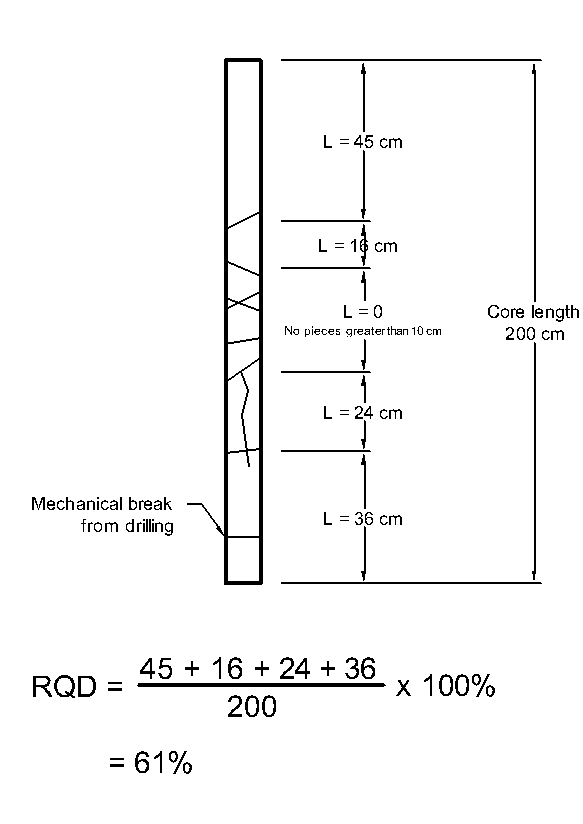Rock Quality Designation (RQD) is a test used by geotechnical engineers to indicate the degree of fracture of a drill core. It is a simple process which involves counting up the pieces of drill core which are more than 10 cm long and fully intact. The percentage of the whole drill core length is the RQD.
Equation
$latex RQD = \frac{Total\ length\ of\ core\ pieces\ >\ 10\ cm\ in\ length}{Length\ of\ core}\ x\ 100\%&s=2$
Results
| Rock Quality Designation | Description |
|---|---|
| < 25% | highly weathered, extremely weak |
| 25% – 50% | Fractured, weathered, very weak |
| 50% – 75% | Some fractures, fair strength |
| 75% – 90% | Good quality and strength |
| 90% – 100% | Very strong |
In the above photo, the RQD turned out to be 15% with total recovery around 63% (i.e. 37 percent of the core was lost). As you can probably imagine, it was “extremely weak” rock. The bridge we were planning at that site had to have deep piles.
The rock quality designation should be written into the drill logs. It is used for skin friction and end bearing values for pile designs, and as a qualitative indicator in many other geotechnical recommendations.
Example
Do you have anything else to add? Please leave a reply.


Speak Your Mind